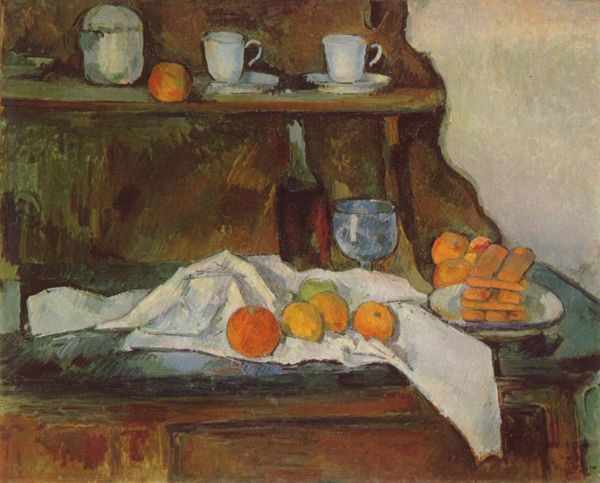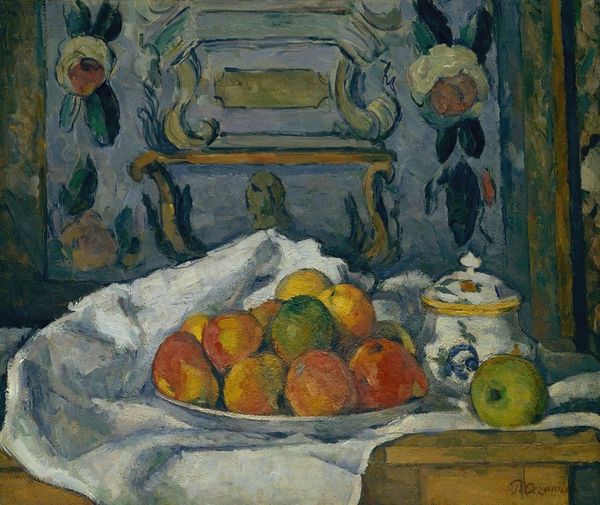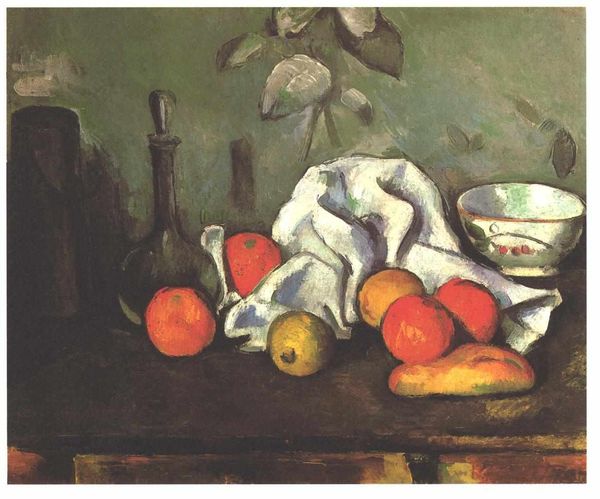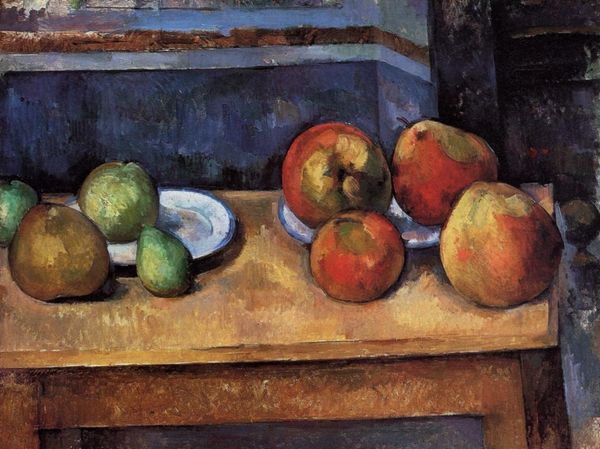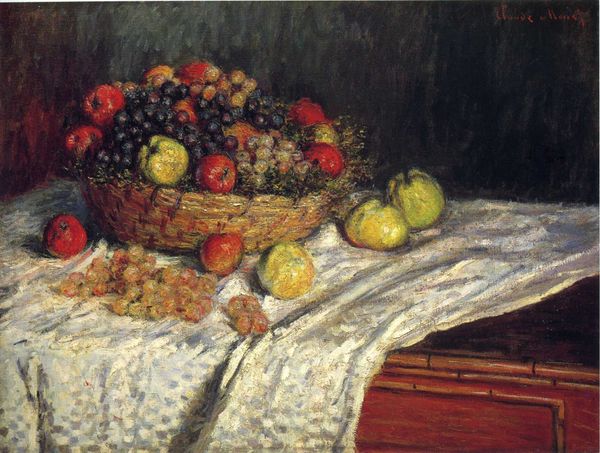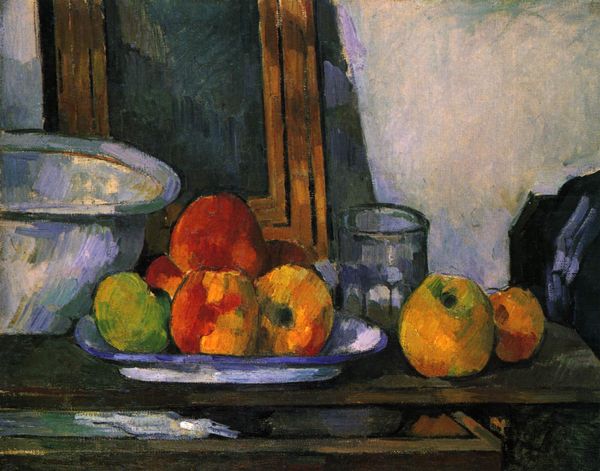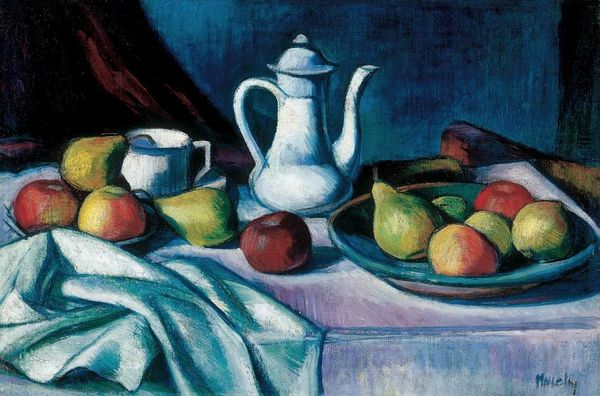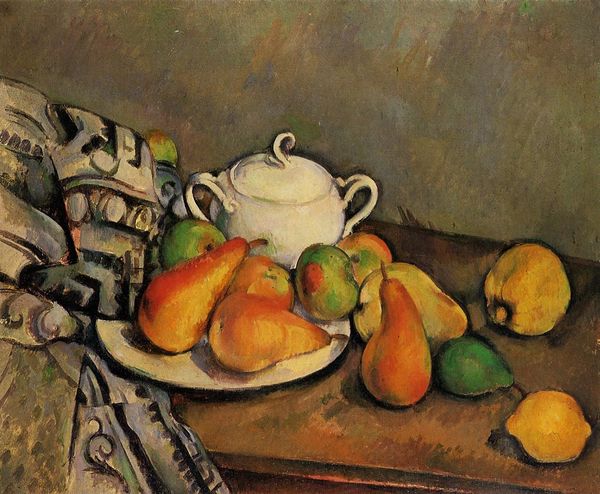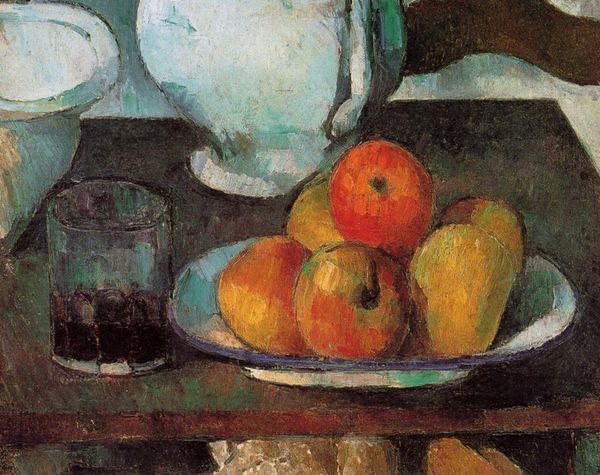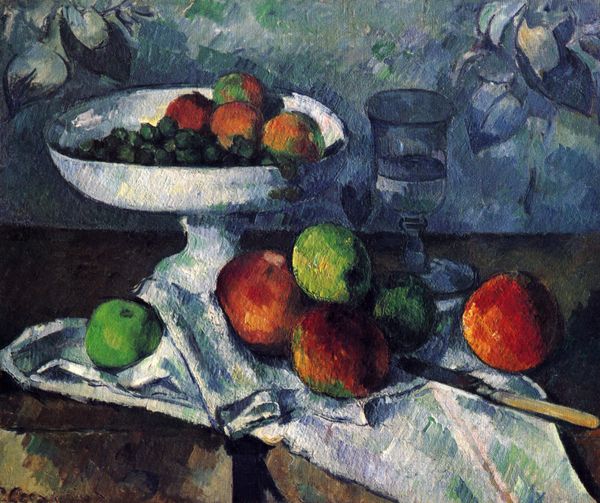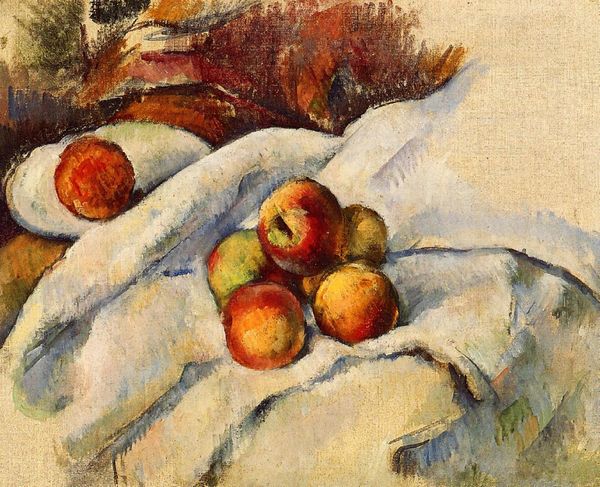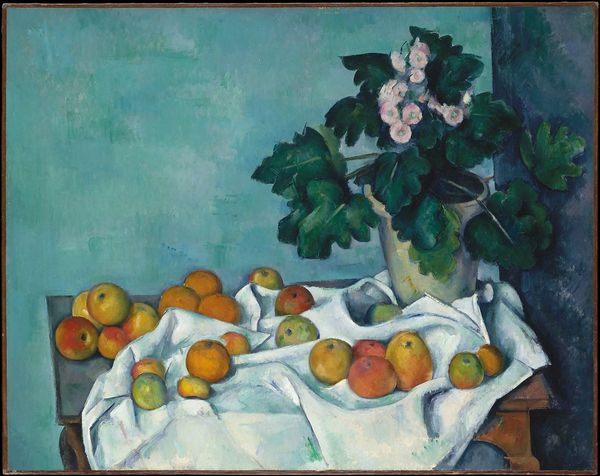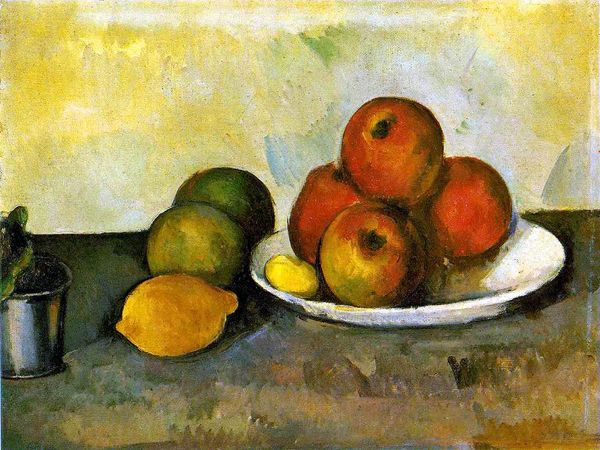
photography
#
still-life
#
acrylic
#
abstract painting
#
charcoal drawing
#
possibly oil pastel
#
charcoal art
#
photography
#
oil painting
#
acrylic on canvas
#
underpainting
#
painting painterly
#
watercolor
Copyright: Public domain
Paul Cézanne created this still life painting with oil on canvas in France. The image shows a collection of everyday objects, like fruit and tableware, arranged on a draped surface. The use of multiple perspectives and simplified forms challenges traditional representation. Cézanne's work emerged during a period of rapid industrialization and social change in France, when artists began to question academic conventions. The French Academy's emphasis on idealized depictions and historical narratives was being challenged by artists who wanted to portray modern life and individual experience. Cézanne’s focus on ordinary objects and his exploration of perception resonated with broader cultural shifts towards individualism and subjective experience. By examining his letters, studio records, and the writings of his contemporaries, we can better understand the context in which Cézanne's still lifes were created. Ultimately, the meaning of this painting is contingent on the social and institutional context in which it was made and received.
Comments
No comments
Be the first to comment and join the conversation on the ultimate creative platform.
